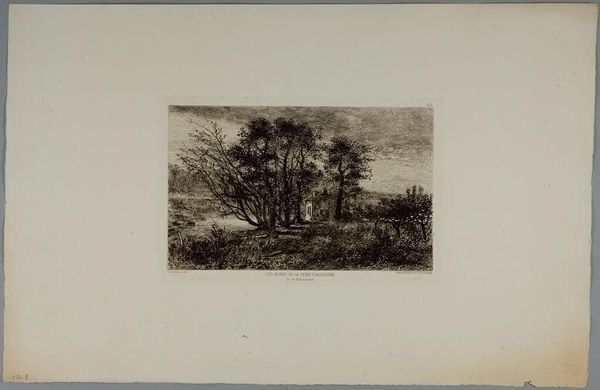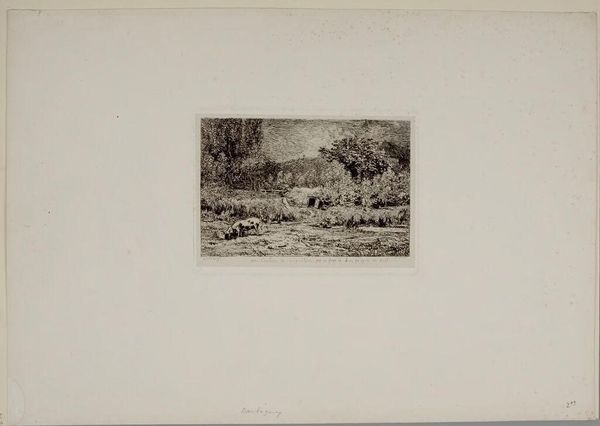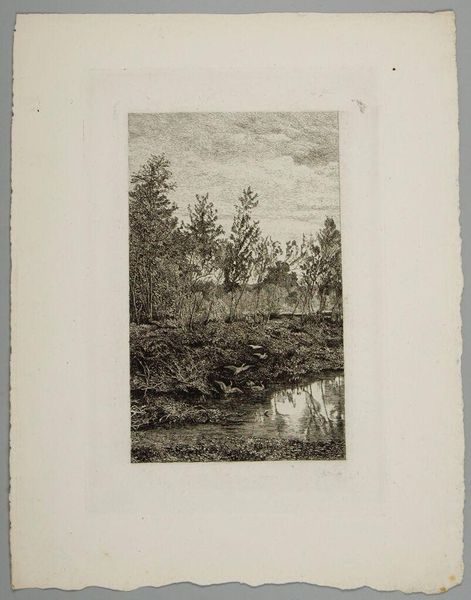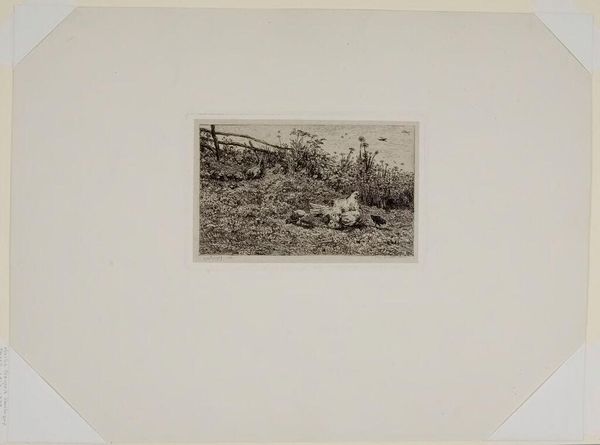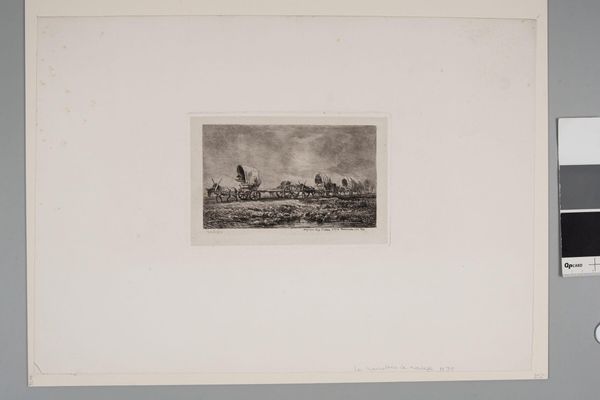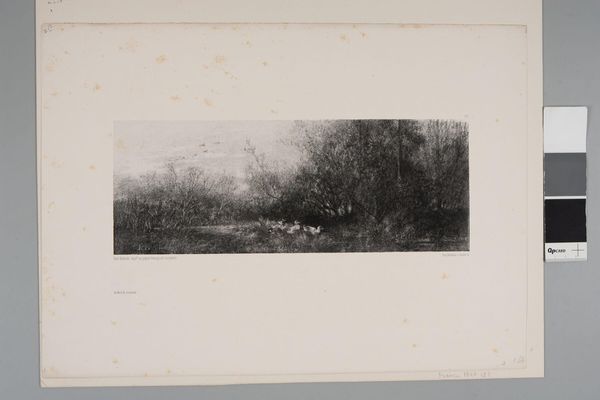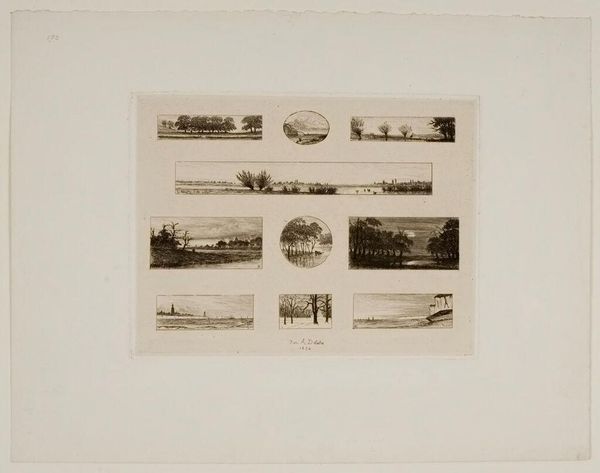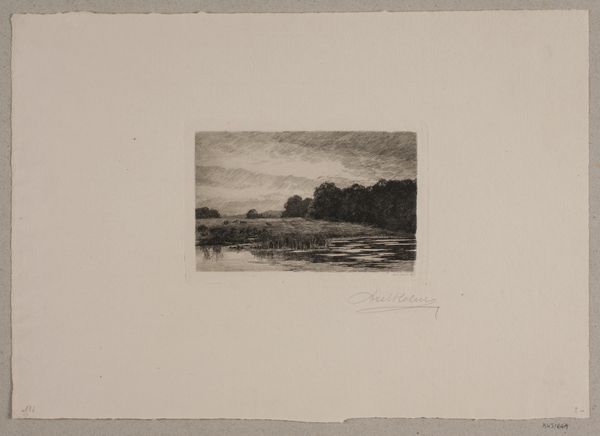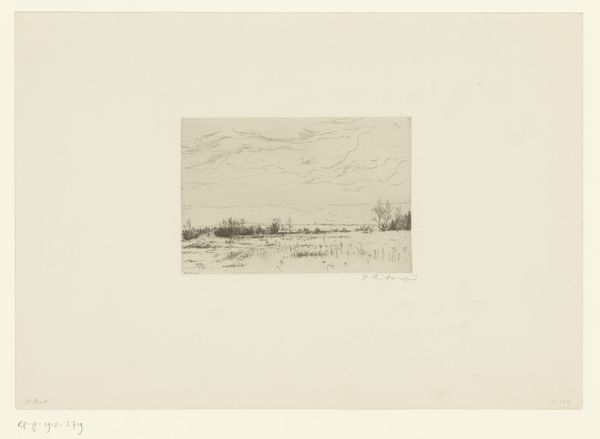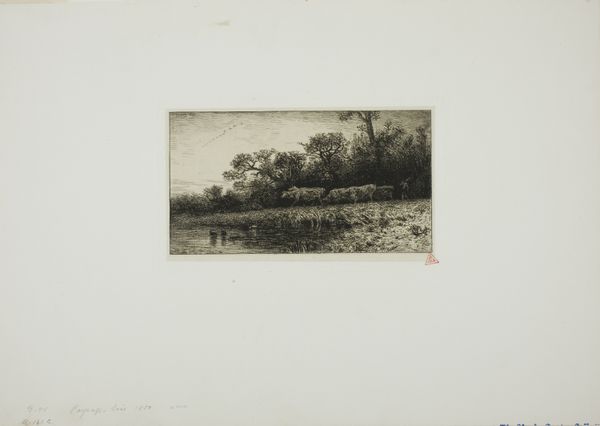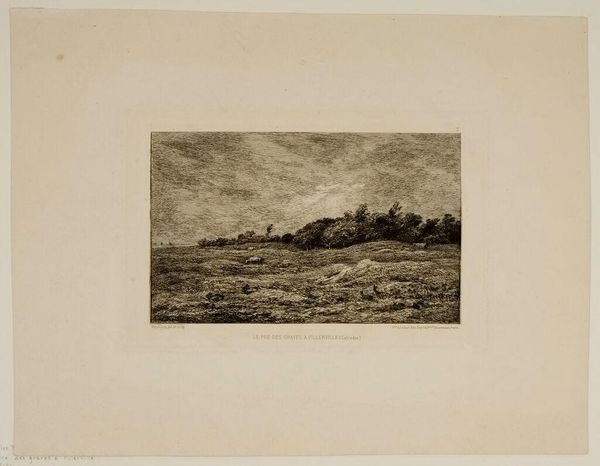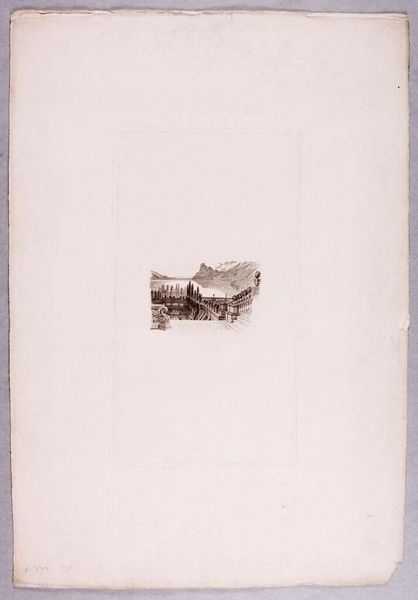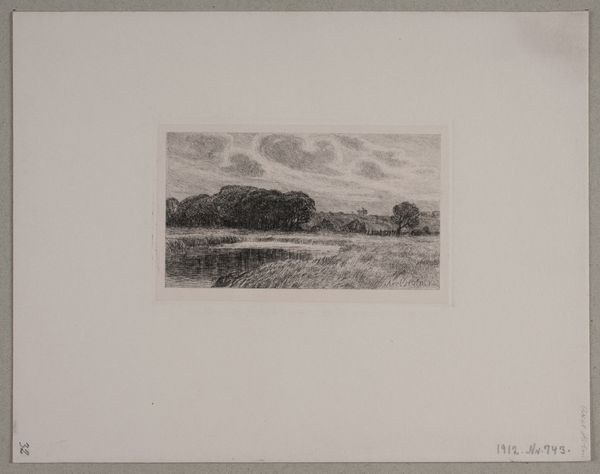
Copyright: CC0 1.0
Curator: Elmerich's "View of the Oise at Auvers," housed here at the Harvard Art Museums, presents a tranquil riverscape rendered in delicate lines. It evokes a sense of stillness, doesn't it? Editor: It does. The near monochromatic palette and detailed etching almost convey a feeling of restrained grief, a somber contemplation of nature. Curator: The social context of landscape art often reflects a yearning for simpler times, perhaps as a reaction to industrialization, or even political upheaval. Elmerich could be commenting on the changing environment. Editor: And the choice of Auvers is telling. This area attracted many artists, like Van Gogh, seeking refuge and inspiration. It was a community grappling with its own identity. Curator: I appreciate how the composition draws attention to the relationship between the land and water, a mirrored reflection that also invites viewers to question our own connection to the land. Editor: Exactly. The lack of vibrant color directs us to reflect on the quiet beauty of the scene, a beauty that so often goes unnoticed. Curator: Well, it reminds us that art is never created in a vacuum, but emerges from specific cultural, social, and political circumstances. Editor: Indeed. The piece quietly urges us to consider the broader context surrounding its creation and its presence here today.
Comments
No comments
Be the first to comment and join the conversation on the ultimate creative platform.
